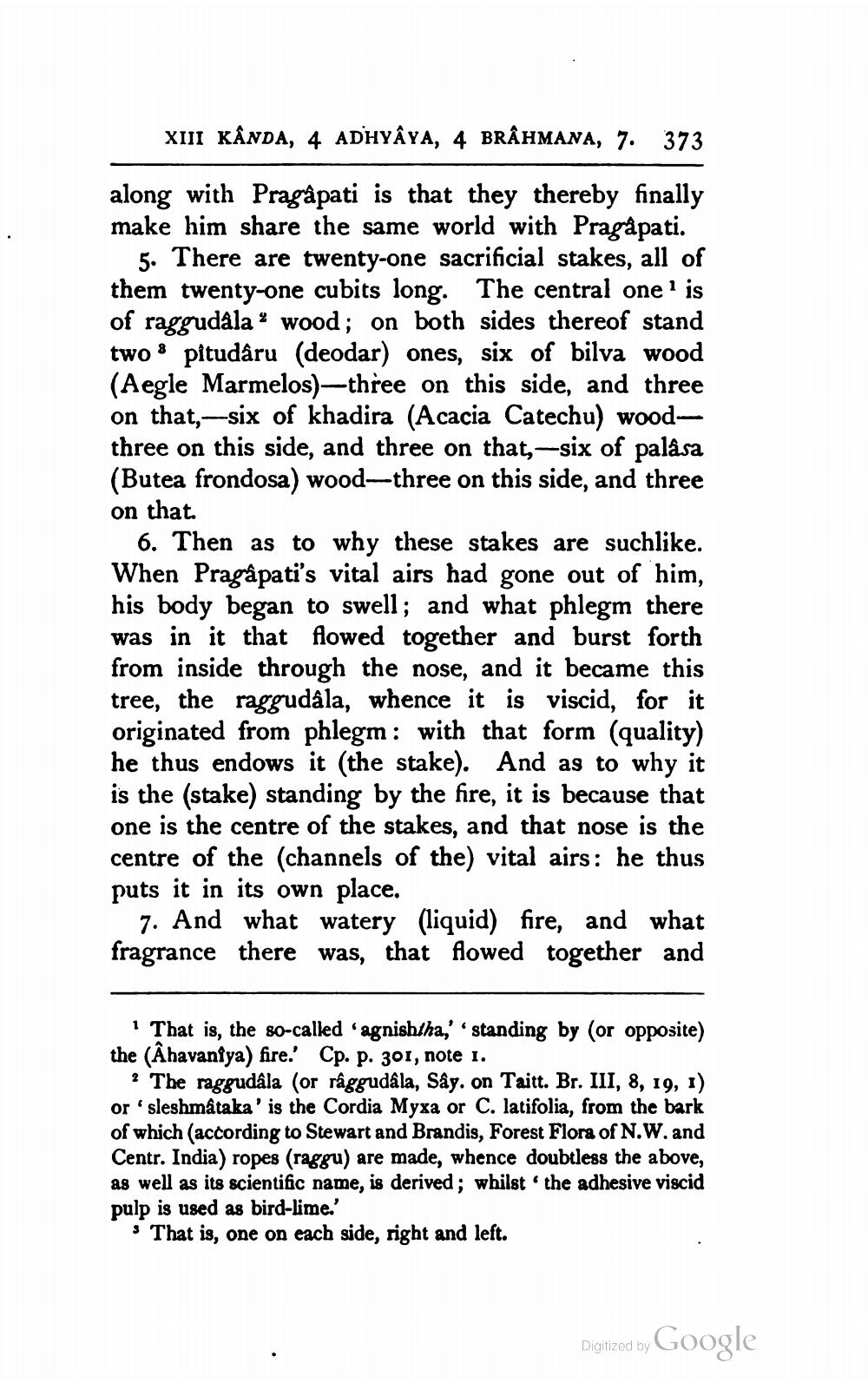________________
XIII KÂNDA, 4 ADHYAYA, 4 BRÂHMANA, 7. 373
along with Pragâpati is that they thereby finally make him share the same world with Pragàpati.
5. There are twenty-one sacrificial stakes, all of them twenty-one cubits long. The central one is of raggudala ? wood; on both sides thereof stand two 8 pitudâru (deodar) ones, six of bilva wood (Aegle Marmelos)—three on this side, and three on that,-six of khadira (Acacia Catechu) woodthree on this side, and three on that,-six of pala sa (Butea frondosa) wood-three on this side, and three on that.
6. Then as to why these stakes are suchlike. When Pragâpati's vital airs had gone out of him, his body began to swell; and what phlegm there was in it that flowed together and burst forth from inside through the nose, and it became this tree, the raggudâla, whence it is viscid, for it originated from phlegm: with that form (quality) he thus endows it (the stake). And as to why it is the (stake) standing by the fire, it is because that one is the centre of the stakes, and that nose is the centre of the channels of the) vital airs: he thus puts it in its own place.
7. And what watery (liquid) fire, and what fragrance there was, that flowed together and
1 That is, the so-called .agnishtha,' standing by (or opposite) the (Ahavaniya) fire.' Cp. p. 301, note 1.
? The raggudala (or râggudala, Sây. on Taitt. Br. III, 8, 19, 1) or 'sleshmâtaka' is the Cordia Myxa or C. latifolia, from the bark of which according to Stewart and Brandis, Forest Flora of N.W. and Centr. India) ropes (raggu) are made, whence doubtless the above, as well as its scientific name, is derived; whilst the adhesive viscid pulp is used as bird-lime.'
3 That is, one on each side, right and left.
Digitized by Google




